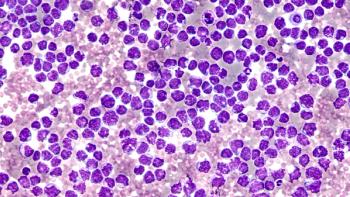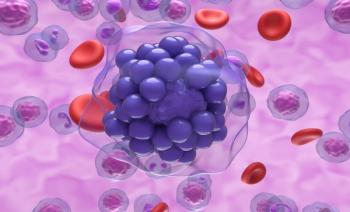
Systemic Barriers in Patients’ Weight Loss Journey: David Rometo, MD
Social determinants of health disproportionately impact patients' ability to maintain and achieve their weight loss goals.
Weight loss and making lifestyle changes to achieve such are heavily impacted by social determinants of health.
David Rometo, MD, clinical associate professor of medicine at UPMC Division of Endocrinology and Metabolism, in Pittsburgh, PA, spoke at the UPMC Pop Health Institute for Value-Based Medicine® event on obesity medicine clinics and comprehensive lifestyle programs. In an interview with The American Journal of Managed Care®, Rometo discussed the socioeconomic barriers many face during their weight loss journey. Whether that be access to weight loss therapies or difficulty making lifestyle changes due to their environment.
Current weight loss therapies target individual behavior, medications related to dietary changes, or increased physical activity. However, many of these weight loss programs fail to recognize the impact of social determinants of health that impact an individual’s ability to maintain and achieve a healthier lifestyle. Whereas socioeconomic status is frequently used when describing health disparities among minority populations, there is limited research that can accurately measure the multiple social determinants of health that also play a role when it comes to weight loss.1
Rometo attests to the patients he’s seen who live in food deserts and don’t have access to whole foods. By shifting patients’ mindsets, Rometo encourages them to see the barriers in their weight loss journey, not of themselves, but external factors that are systemically built to disadvantage them.
“We use it in our program, and one of those is the assumption that someone else is financially benefiting from selling me these ultra-processed foods, right?” he said. “If you take that and say, “Okay, this corporation is making billions of dollars making us sick, right?” Then you have something to fight against.”
Socioeconomic status and environment play a crucial role in patients’ ability to maintain and achieve their weight loss goals. Rometo believes that more research is required to measure the detriments to a patient’s weight loss journey, as well as physicians’ acknowledgement of said barriers.
This transcript has been lightly edited. Captions are auto-generated.
What role do social determinants of health play in treatment success, and how can clinics adapt to address these barriers?
Social determinants of health. I don't reject that term, but I like "environmental determinants of health" better because it's not just social. And for food insecurity, I like to throw in whole food insecurity, because a lot of times people do have a significant lack of access to what everyone was eating 100 years ago, but they have tremendous access to ultra-processed foods, fast foods, sugary beverages, and things like that. I do try to make that distinction in conversations, policy-wise and otherwise, but it absolutely is a tremendous barrier to the magnitude of success if you don't address it at all.
If you just ignore the fact that there are differences in terms of where people live, what their upbringing has been, what they've experienced in life, what job they have, and what their financial situation is, if you ignore all these things, you're absolutely going to have tremendous barriers. One of the ways to address them is to address what the barriers outside of it are. And in doing so, you give the patient something to fight against that isn't themselves. That's how I use it, or we use it in our program, and one of those is the assumption that someone else is financially benefiting from selling me these ultra-processed foods, right?
If you say, “This corporation is making billions of dollars, making us sick, right?” Then you have something to fight against, and “I'm not going to give them my money” becomes an appropriate thing.
Having access to whole foods is one of the things that’s also really appropriate. Where is the local grocery store? How close is the place that has fresh produce and that does have whole foods, and are there services that provide this? Are there places that deliver in terms of transportation?
Clinics need to have the regional resources to give that to patients, instead of just expecting the patient to figure it out on their own. At the same time, I'm focusing on just the quality of the food, because that's the largest component of [weight loss] in terms of health. Just giving [patients] ideas of where that food is is not going to allow patients the complete benefit of that unless they really change the way they think about the food that they're constantly surrounded by.
If they think it's like, “I'm not allowed to have the stuff that I love and that I've been eating my whole life,” that's not going to fly. They need to want to be someone who stops putting those things in their bodies, and their socioeconomic status, where they live, and in what zip code really affects how much of a battle that actually is. That's why it’s so important to address.
What are the main challenges in access, affordability, and insurance coverage you've encountered?
The biggest access issue is, “Do I know it? Does my doctor know it? And do we have time to talk about it? And who brought it up?” But once you get past that point, the oral medications that have been around for more than 70 years are affordable out-of-pocket for most people. The brand names are no higher than $100 a month. The generic equivalents, or the generic medicines, can be less than $50 a month. The expensive medications are the ones that [require] insurance for most people, but the others are generally accessible to people other than the lowest socioeconomic category, where people need assistance programs to be on any medicine.
Unfortunately, that applies to all people. But, $500 a month is the out-of-pocket cost for these weekly injectable medications that can [help patients achieve] 15%, 20%, 22% weight loss. Financially, that’s not attainable for the vast majority of people. If they have type two diabetes, not a problem. It's easy to get Luna's medicine. But then the newer indications associated with obesity like a heart attack or a stroke, peripheral arterial disease, moderate-to-severe sleep apnea—with symptoms, despite using my CPAP for three months—fatty liver disease with stage two fibrosis, these are high bars. Most people with these medical problems don't reach the severity of these medical problems [needed to receive coverage]. They've got heart disease, but haven’t had a heart attack yet, and for the vast majority of people with obesity, they're just hoping that their employer, or hoping that their state Medicaid covers these medications at all. And even if they do cover them, there might be a higher [body mass index] cut off, or there might be a lot of hoops that they need to jump through in terms of doing something else for six months.
But primary care doctors being comfortable using those medicines, that's where there's a large gap because they didn't learn about phentermine and topiramate in medical school or residency. They didn't really learn about naltrexone and bupropion. They were never trained to treat obesity at all with medicine and so again that access to care at the primary care level is still very large.
References
1. Betz C, Bartelmeß T. Weight loss journeys: Exploring social influences and determinants of health in an exploratory rural German intervention. PLoS One. 2025. 14;20(8):e0330358. doi:10.1371/journal.pone.0330358
Newsletter
Stay ahead of policy, cost, and value—subscribe to AJMC for expert insights at the intersection of clinical care and health economics.













































